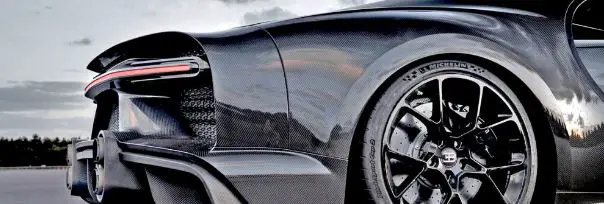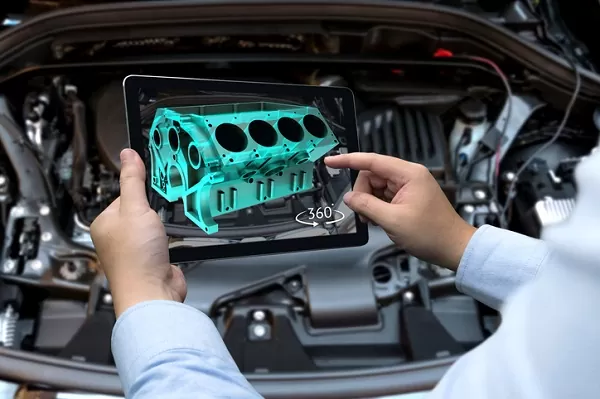Whether you’ve just bought a brand-new car, traded your sedan for an SUV, or swapped your family-friendly five-door for a sleek and sporty convertible, you should be thinking about your tires. And not just about detailing them either. That may be the most exciting part, but there are other less exciting considerations that are important too. One such consideration is the tire brand itself, as investing in high-quality options like Lexani tires can make a significant difference in the performance and safety of your vehicle.
No matter which brand of car you have purchased or even really what kind of vehicle it is, there are some fundamental tire care guidelines that just about everyone should follow.
In this post, we’ll take a comprehensive look at the best tire care practices for long-term maintenance, maximum safety, and savings.
Know Your Tires
Not all tires are the same, whether in size, tread and tread pattern or seasonal suitability. For this reason, most car brands and types require an individual approach to tire maintenance. For example, trucks and SUVs tend to require thicker, ribbed tires that can cope with the weight of a larger vehicle. Sports cars, on the other hand, typically need all-season or summer tires.
To give your new car’s tires the best possible care, you need to learn more about what they specifically need to stay in the best possible shape. This will help guide your maintenance plan, both now and for the rest of your tire’s lifetime.
You can ask your car dealer in colorado springs for more information about your tires, stop in at a local tire shop or do your research online. Don’t just assume your tires are fine or best suited to your car, especially if you purchased your vehicle privately second hand
Check Your Tire Pressure Every Month
If a car is used on a regular (daily) basis, it could stand to lose as much as 1 pound of air per square inch every month. This may not seem like a lot now. But over time, it builds up, leaving you with weak, unstable tires that are not safe or easy to drive on.
A monthly tire check is considered the standard for tire care and maintenance. Don’t wait until your oil needs changing to ask your gas attendant for a tire check. Make it a part of your monthly routine, and remember that tires lose more pressure the colder it gets.
Don’t Install Incompatible Tires
All of the tires on your car should be identical. While it may be easier to swap one out for a different brand or type in an emergency, this should always be an interim solution. Having different tires is not only a potential safety risk, but it can also even damage your car’s suspension over time.
Regularly Rotate Your Tires
Frequent tire rotations are essential for the long term health of your vehicle. The recommended regularity is to get them rotated for every 6,000 to 8,000 miles you drive.
This means you need to keep tabs on how many miles your vehicle drives, and make the responsible decision when it hits that 6,000 to 8,000 mark. This will ensure you get the maximum life out of your tires and maintain tread wear on the rubber.
Some tire stores provide free tire rotations for their customers, but even if yours doesn’t, paying for them yourself is a fairly inexpensive process, and it’s well worth the investment.
Inspect Your Tires Before And After Long-Distance Travel
Before you embark on a long-distance road trip, it’s vitally important to get your tires inspected. The same goes for when your trip is over. This just helps to stay in the loop about any issues that could potentially endanger you and your passengers, while making sure you have the best road experience possible.
Thin or uneven tread, bald spots or any damage is always a red flag. The minute you spot any of these issues, it’s time for new tires.
Be Wary Of Overloading Your Car
Unless your car is specifically built for transporting heavy loads, you need to be very careful of overloading your vehicle. Most cars are designed to carry a maximum weight of 400 to 500 pounds, but you should always check your manual for exact numbers.
The more weight you force your car to carry, the more strain your tires are put under. Overloading your car may lead to tire failure, bursting, and other hazardous outcomes.
Keep Your Sidewalls Clean
A simple way to contribute to the health and lifetime of your tires is to put a little elbow grease into their sidewalls. It’s a small maintenance act that doesn’t require a lot of time or resources to execute, but the benefits are significant.
Take a clean microfiber cloth and some high-quality tire shine, and polish your tires regularly to retain their shine. This will also protect them from sun damage and dirt that you drive through over time. The more consistently you clean your sidewalls, the easier they will be to maintain.
Never ignore the TPMS light
“TPMS” stands for Tire Pressure Monitoring System. Most modern cars have a TPMS light that indicates an over-inflated or under-inflated tire—both of which require immediate attention.
From the maximum volume of weight that your car can carry to the maximum speed, the TPMS light plays a crucial role in communicating the status of your tires. If the light comes on, don’t ignore it, take it seriously and do whatever is needed to solve the issue safely.
If you don’t have a TPMS light, always check that your pressure is correct when pumping up your tires. The right pressure will depend on your tire type, whether they’re designed for specific seasonal use and road conditions, and the size and weight of your car.
Over-inflating is as dangerous as under-inflating, so don’t make the mistake of thinking that a harder tire is the best option.
Don’t Wait Until It’s Too Late
While performing regular tire maintenance and polishing with quality products will promote the look and longevity of your tires and the safety of your drive, even the best quality tires won’t last forever.
We know, tires are expensive. But so are major vehicle breakdowns. And in the unfortunate event of an accident, you may lose more than just money.
Thin, over-worn tires are dangerous and could result in bursting, swerving, or other undesirable outcomes. Instead of waiting until your tires absolutely need replacing, think ahead and replace them before they reach breaking point. Your car, your wallet, and other road users will thank you.
Go Home







